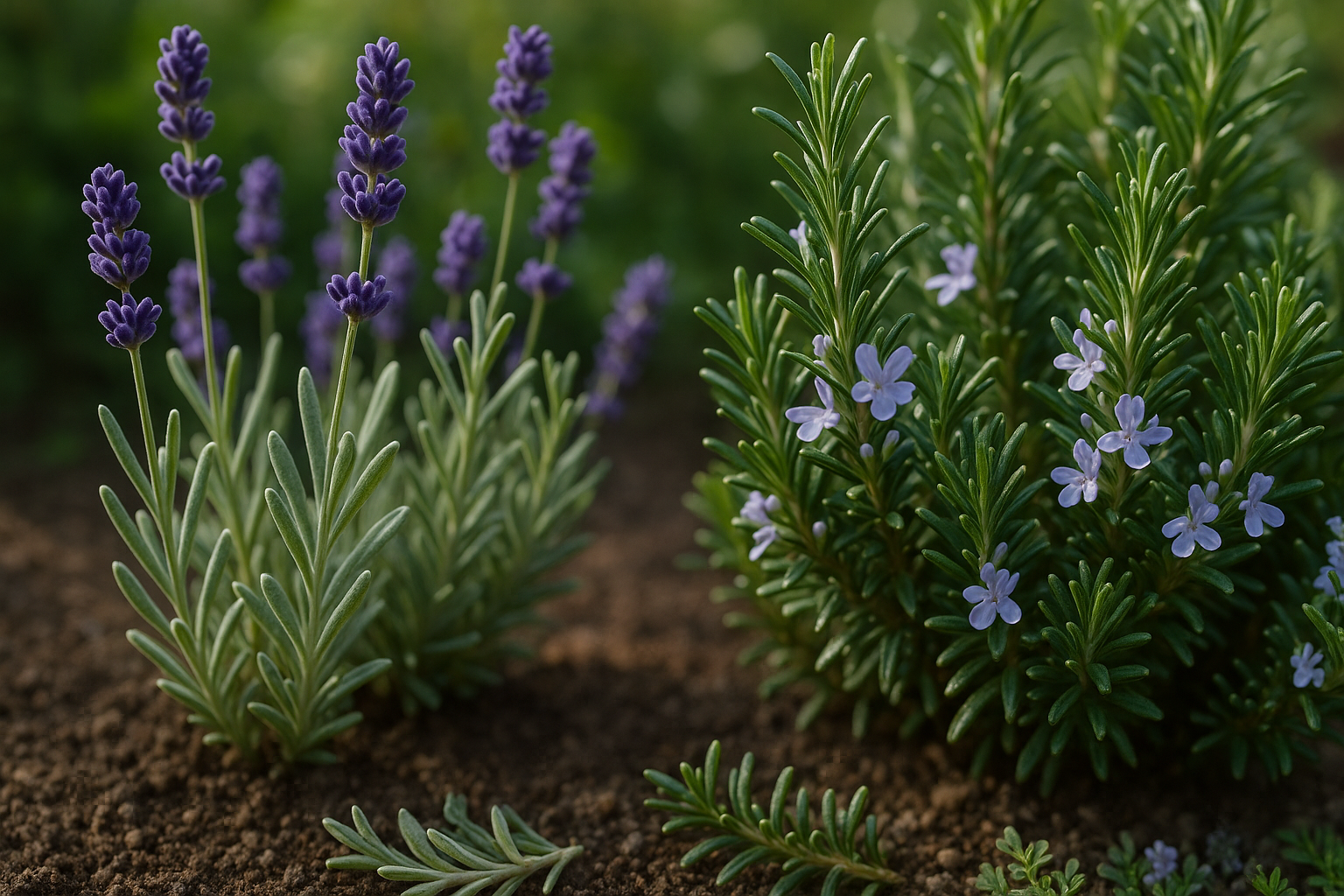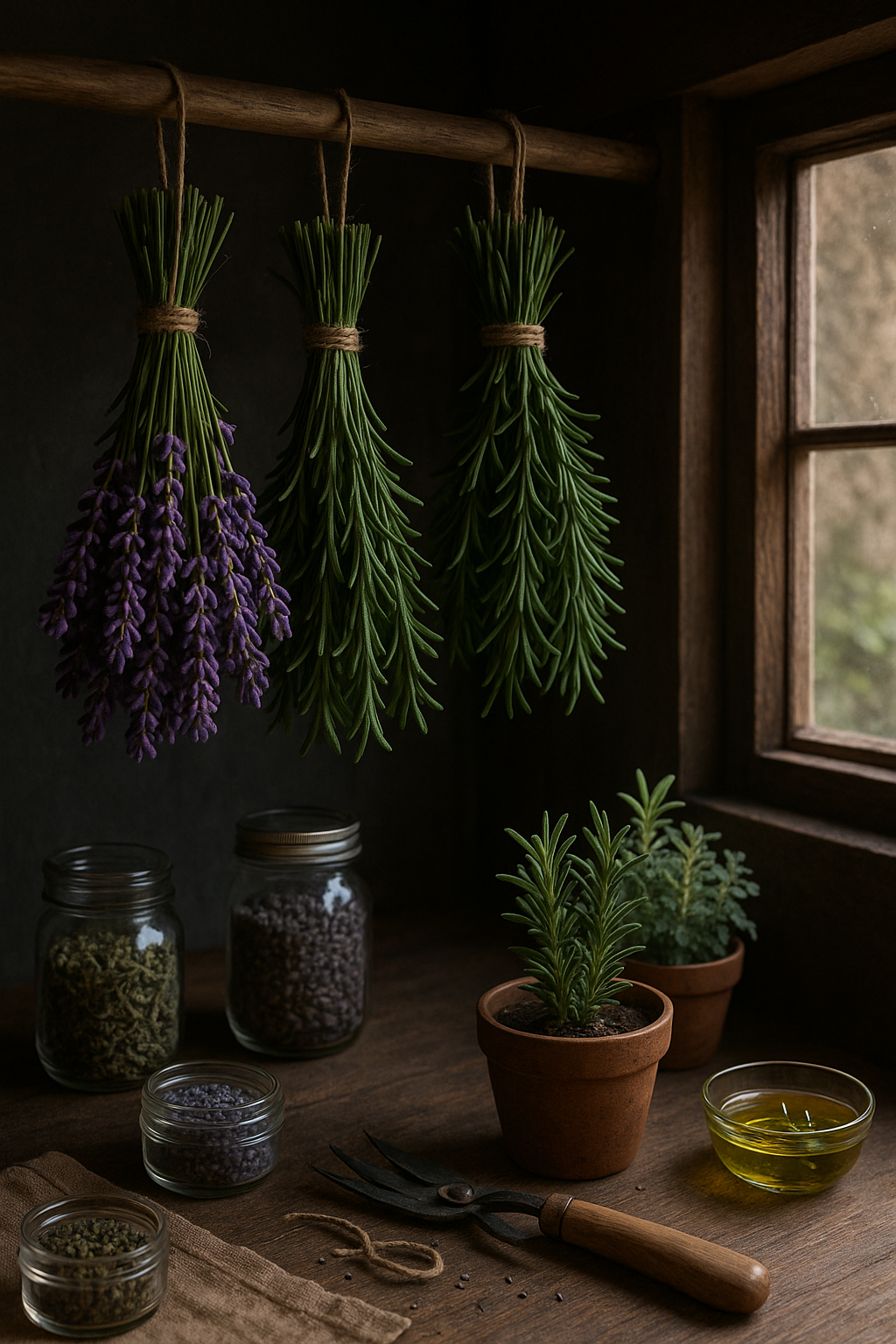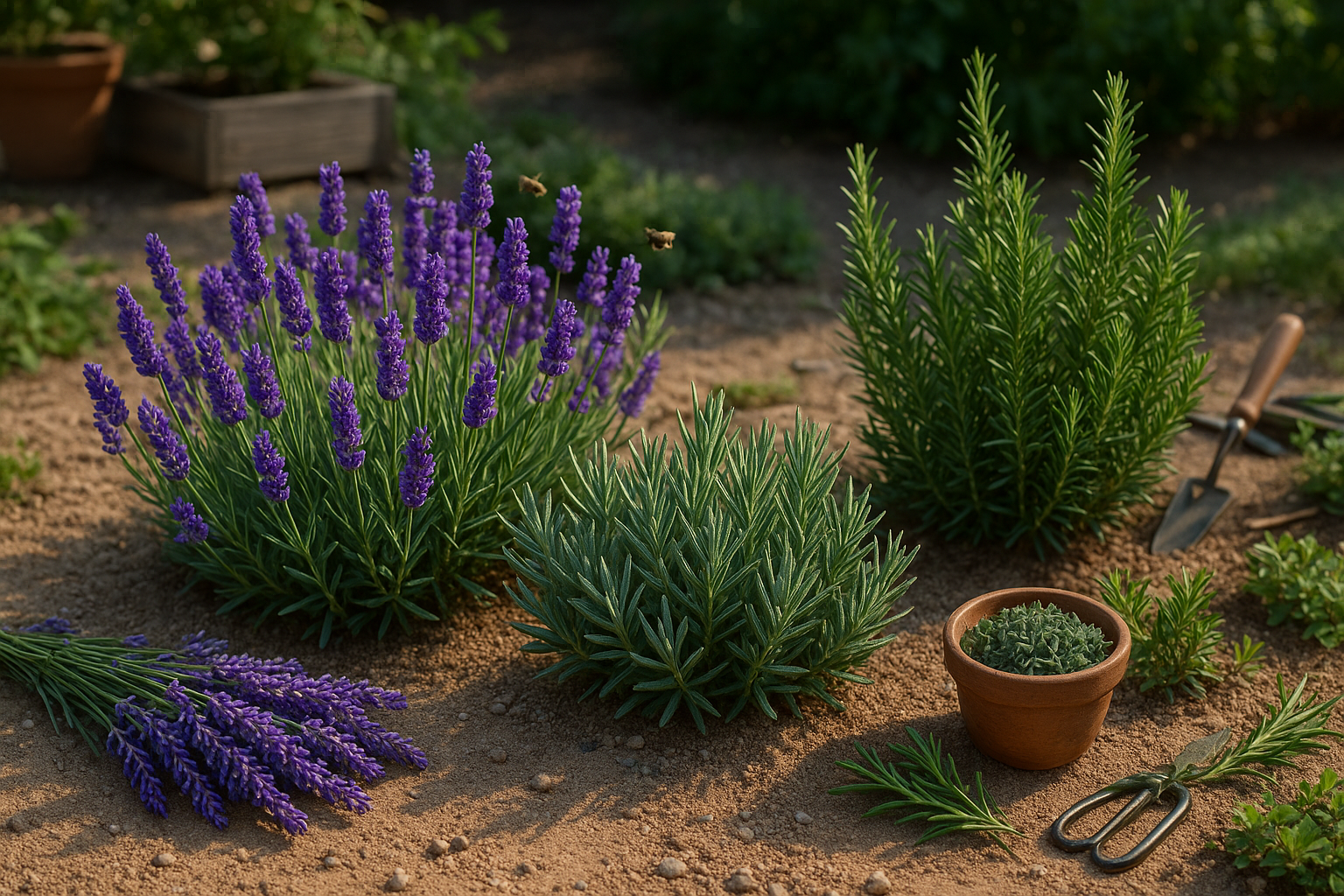Introduction
Lavender vs rosemary—two powerhouse herbs that grace gardens and kitchens around the world. Both bring an unmistakable burst of flavor and fragrance, but they each have unique characteristics that make them shine in different ways. Whether you’re drawn to the floral, soothing notes of lavender or the intense, piney aroma of rosemary, choosing between them isn’t just a matter of taste.
If you’re hoping to get the most out of your herb garden or spice up your culinary creations, knowing how lavender and rosemary differ in growing needs, uses, and everyday care can make all the difference. For example, did you know lavender prefers dry, sandy soil while rosemary thrives with a bit more moisture? And while lavender is famous in desserts and sachets, rosemary is a classic for roasts and savory dishes.
In this post, we’ll guide you through everything you need to know about lavender vs rosemary—from the best way to plant and prune each herb to creative ways to use them in the kitchen and home. Whether you’re a home cook, gardener, or simply love the scent of fresh herbs, understanding their distinct qualities will help you make the most informed—and flavorful—choices.
Botanical Differences and Physical Appearance

Lavender and rosemary are often found side by side in herb gardens, but they come from different botanical backgrounds that give each plant its distinctive flair. Lavender belongs to the genus Lavandula in the mint family (Lamiaceae), which also includes rosemary—recently reclassified as Salvia rosmarinus. This shared family partially explains why both plants have aromatic, oil-rich leaves and square stems—a characteristic of the mint family that can be puzzling to new gardeners.
However, their appearances quickly set them apart. Lavender’s slender leaves are typically gray-green and covered in fine hairs, giving them a silvery sheen. In contrast, rosemary has needle-like, dark green leaves with a glossy upper surface and pale, almost white undersides. Lavender usually grows as a tidy, rounded shrub, while rosemary tends to be more upright and can become quite bushy, even cascading or creeping depending on the variety.
Flowering Habits
Flowering habits further distinguish these herbs:
- Lavender: Produces dense spikes of purple, violet, or blue flowers, filling the summer air with its famous fragrance.
- Rosemary: Bears smaller, more delicate flowers, usually soft blue or pale violet, appearing in clusters along the stems—most commonly in late winter or early spring, though mild climates can inspire multiple blooms per year.
Both plants are evergreen, offering year-round structure and color to gardens. Their unique leaf textures and colors provide an easy way to tell them apart at a glance. If you’re torn between them, try planting both in separate spots—you’ll quickly learn to spot the silvery shimmer of lavender against rosemary’s vivid green, even when they’re not in bloom.
Growing Requirements and Care Tips
Most culinary herbs thrive when given specific growing conditions tailored to their unique needs. For basil, choose rich, well-draining soil and a sunny spot that receives six to eight hours of direct sunlight daily. Water regularly, but allow the top inch of soil to dry out between waterings to prevent root rot.
Rosemary prefers slightly sandy, well-drained soil and can tolerate less water. It thrives in full sun and performs well even in rocky, Mediterranean-style gardens—just be careful not to overwater.
Mint is famously vigorous and grows best in average garden soil with partial to full sun and consistently damp conditions. Since it spreads aggressively, consider planting it in a pot or other contained area to prevent crowding out neighboring plants.
Many herbs, like basil, parsley, and cilantro, can be grown together in a larger container if they share similar water and sunlight preferences. However, keep more dominant species like mint and rosemary in their own space to avoid competition.
Pruning regularly encourages bushier growth in basil and mint and helps prevent flowering, which can make herbs taste bitter. Most culinary herbs are fairly pest-resistant, but watch for aphids or fungal issues. If needed, use neem oil or a gentle insecticidal soap.
Common challenges include overcrowding, poor drainage, and overwatering, as many herbs dislike “wet feet.”
For propagation, most herbs like basil, mint, and oregano root easily from cuttings placed in water until roots develop, after which you can move them to soil. Others, such as cilantro and dill, are best sown directly from seed since they don’t transplant well.
By focusing on each herb’s individual needs, you’ll be rewarded with a lush, healthy kitchen garden that offers fresh flavors all season long.
Scent, Flavor, and Culinary Uses
Rosemary and lavender each bring distinct aromas, flavors, and culinary benefits to the kitchen, making them essential for both cooks and home fragrance enthusiasts. Rosemary’s scent is woody, piney, and invigorating—its essential oil is often used in aromatherapy to boost focus and clear the mind or to add brisk, herbal notes to homemade candles and diffusers. Lavender, meanwhile, has a floral, sweet, and calming aroma, perfect for relaxation blends or pillow sprays that help soothe stress.
In the kitchen, rosemary offers a robust flavor with hints of pepper and resin, pairing beautifully with roasted meats—especially lamb and chicken—potatoes, and savory breads. Even a small sprig can elevate soups or vegetable dishes. Lavender presents a gentler, more delicate taste—slightly sweet with subtle citrus notes—making it ideal for desserts like shortbread, scones, ice creams, or infused syrups. It also adds an unexpected depth to savory recipes, such as herbes de Provence roasted chicken or honey-lavender glazes for carrots.
Both herbs enliven teas: rosemary steeps provide a sharp, uplifting twist, while lavender infusions create a floral, calming cup. If you run out of one, rosemary can sometimes substitute for lavender in bread or roast recipes—use less due to its intensity. Conversely, lavender works in place of rosemary in some baked goods or herbal blends for a gentler profile, though start with a light hand to avoid overpowering the dish.
For creative pairings, try combining lavender with lemon in cookies or adding rosemary sprigs to olive oil for dipping. Embracing both herbs opens up a range of culinary and aromatic experiences, whether you want to freshen your home, brighten a salad, or whisper floral notes into a summer lemonade.
Medicinal and Household Applications
Lavender has a rich history in both traditional and modern medicinal practices, celebrated for its calming scent and diverse uses. Historically, lavender extracts and oils were added to baths and teas to ease anxiety, promote relaxation, and support restful sleep—a practice still widely embraced today in aromatherapy.
Some studies suggest that inhaling lavender oil may help reduce mild anxiety and improve sleep quality, making it a popular remedy for stress relief. Modern research also supports its use for memory support; a review in the journal Frontiers in Behavioral Neuroscience noted that lavender aroma may modestly boost cognitive performance and mood.
Lavender has mild antiseptic and anti-inflammatory properties, which is why lavender-infused creams and balms continue to soothe minor burns, skin irritations, and insect bites.
Household Uses
Beyond the medicine cabinet, lavender plays a practical role around the house:
- Dried sprigs are placed in wardrobes and drawers as natural air fresheners and moth repellents.
- Lavender-stuffed sachets and potpourri bowls lend a gentle fragrance to rooms.
- Eco-conscious cleaners sometimes add a few drops of lavender oil to homemade household sprays for a fresh scent and to utilize its reported antimicrobial qualities.
Safety Considerations
It’s important to use lavender safely. Essential oil should never be ingested and must always be diluted before applying to the skin to prevent irritation. Some individuals may develop allergic reactions, especially those with sensitive skin or existing allergies—testing a small patch before wider use is recommended.
Pregnant women, nursing mothers, and parents of young children should consult a healthcare professional before using lavender products, as high doses or prolonged exposure may not be suitable for everyone.
Overall, whether for relaxation, skin care, or simply freshening the air, lavender offers a blend of time-honored uses and scientifically supported benefits—when used thoughtfully.
Harvesting, Drying, and Preservation

The best time to harvest lavender and rosemary is in the morning, after the dew has dried but before the sun gets too hot—this is when the essential oils are at their peak. For lavender, snip the stems just as the buds begin to open, using sharp scissors or pruning shears to avoid damaging the plant. With rosemary, trim sprigs of new, soft growth rather than woody stems, which helps keep the plant healthy and flavorful.
To dry your herbs, bundle small bunches together, tie the stems with twine, and hang them upside down in a cool, dark, and well-ventilated area. The darkness helps protect the oils and color, while air circulation prevents mold. Once fully dry—usually in 1 to 2 weeks—remove the leaves or flowers and store them in airtight glass jars away from light and heat, as exposure to air and sunlight will degrade their aroma and potency over time.
For long-term preservation, you can freeze rosemary by spreading sprigs on a baking sheet before transferring them to a sealed bag, or chop both herbs and freeze them in ice cube trays with a little water or olive oil. Another method is to infuse the herbs in oil, which preserves their flavors and provides a delicious ingredient for cooking—simply submerge clean, dry sprigs in your favorite oil and store in the refrigerator for up to a month.
Conclusion
Lavender and rosemary both bring unique qualities to your home and garden, making them top choices for anyone looking to enhance their space or spice up their culinary routine.
Lavender offers beautiful purple blossoms and a calming scent that elevate garden aesthetics, while rosemary, with its sturdy green sprigs, creates lush greenery and thrives as a resilient border plant.
In the kitchen, lavender’s floral notes make it perfect for baking and desserts, infusing recipes with a subtle, sweet aroma. Conversely, rosemary stands out for its savory, piney flavor, pairing beautifully with roasted meats, potatoes, and Mediterranean dishes.
Medicinally, lavender is known for its soothing properties, making it great in teas or aromatherapy for stress relief, while rosemary has been celebrated for boosting focus and aiding digestion.
Don’t hesitate to experiment with both: plant them together in sunny corners or add them as fresh or dried ingredients to your meals. Try blending them in a homemade herbal sachet to refresh drawers or create a relaxing bath soak.
Ultimately, combining these herbs lets you enjoy the best of both worlds—beautiful landscapes, elevated flavors, and improved well-being—right in your own home.
